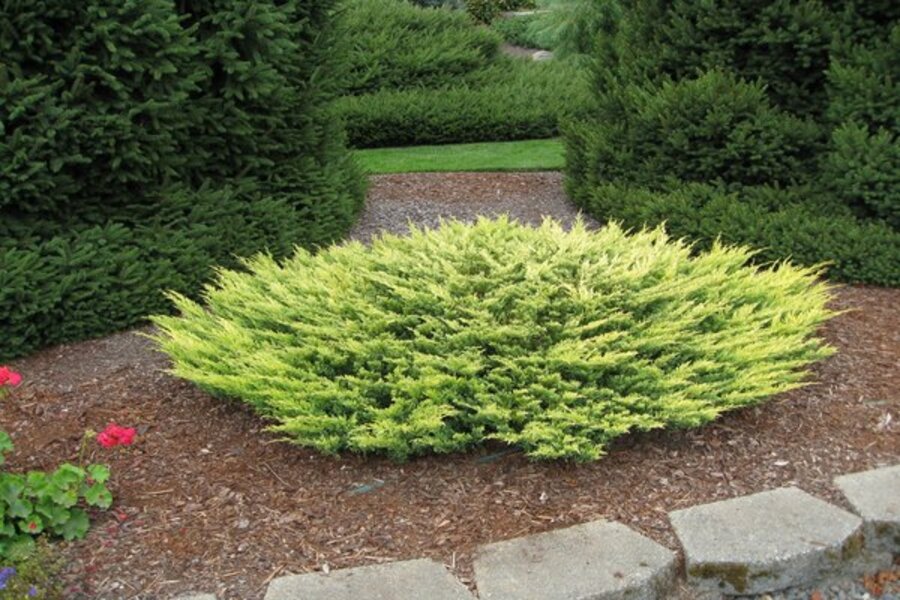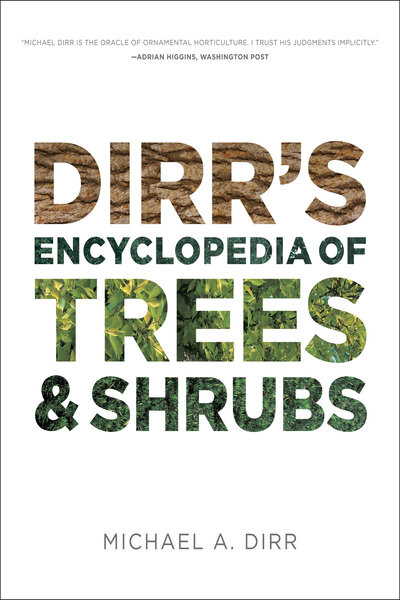Dirr’s tree and shrub encyclopedia sets a new industry standard
The Internet has removed the need for so many types of book. Between the online nursery descriptions and search engine image searches, you can find basic information on many types of plant, and that’s often good enough.
However, things become tricky when you’re trying to compare plants. For example, recently I wanted to plant a Spirea ‘Neon Flash’, but all the nursery had was ‘Anthony Waterer’. On the internet, the descriptions looked remarkably similar, to the point where I wondered whether I was dealing with the same plant under two different names. (This happens a surprising number of times in the plant world.)
This is where a giant, thorough encyclopedia comes in handy.
"Dirr’s Encyclopedia of Trees and Shrubs" is now available, and it is a game-changer. Twice as thick as Michael Dirr’s most famous work, "Dirr’s Hardy Trees and Shrubs," it is crammed full of photos and deliciously blunt descriptions of each of the varieties listed.
The book feels like a gift - the essence of Dirr, immortalized - and is clearly going to be the new must-have book for anyone serious about gardening.
The benefits of a comprehensive encyclopedia like this are numerous. First, in my Spirea research, I was able to get a clear comparison between ‘Neon Flash’ and ‘Anthony Waterer’. (If you’re curious, ‘Neon Flash’ is slightly shorter, much less wide, and doesn’t have the tendency to develop cream-colored foliage reversions as does ‘Anthony Waterer’ - in short, had I gone with the Internet’s advice I would have been pruning dear Anthony off his neighbors for years to come.)
Honest, no-nonsense advice
Second, I trust Dr. Dirr. He’s brutally sarcastic, thoughtful, and has no motive to make a plant sound better than it is (hello, nursery catalogs!). I’ve certainly gotten some nasty surprises over the years through ordering plants that sounded fabulous from nursery descriptions, and then had lackluster coloring or performance.
Dirr cuts through all the hype and nonsense, and provides clear comparisons and quick summaries of the benefits or drawbacks of each variety.
And the photos! Oh, the photos. There are two to six color photographs on every page, which means that I can see for myself what the habit or flower color looks like, without having to guess what “vase-shaped” or “more red than the species” means to him.
A true time-saver
If you’ve ever tried to look up an unusual plant in any search engine’s image search, you know the extreme limitations of that media. Mislabeled plants, no clear distinction between named varieties, and few photos of the habit of the plant (just flower closeups) are just some of the issues.
Seeing the photos of differing varieties laid out right next to each other has already saved me enormous amounts of time when selecting just the right variety for a spot. It takes a lifetime of travel and dedication to build a photo library as extensive as this one, and it is almost as much of a gift as the text itself.
If you’re a gardener and you already know and love the earlier book, "Dirr’s Hardy Trees and Shrubs," then this much-more-comprehensive encyclopedia is going to be on your wish list for the next gift-giving occasion.
I’m keeping my old copy of "Dirr’s Hardy," but mostly because it’s so muddy, dog-eared, and highlighted that I feel I’d be getting rid of a personal journal to pass it on now. In the years to come, I expect this new encyclopedia to take on that same well-beloved look.
-----
Genevieve Schmidt is a landscape designer and garden writer in the redwoods of Northern California. She shares her professional tips for gardening in the Pacific Northwest at North Coast Gardening, and on Twitter. To read more of what she has written here at Diggin' It, click here.







